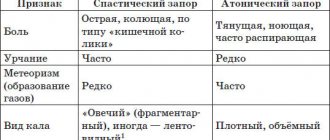Make an appointment by phone: +7 (343) 355-56-57
+7
- About the disease
- Cost of services
- Sign up
- About the disease
- Prices
- Sign up
A child’s temperature is a protective reaction that helps fight the disease. But it does not determine the cause of the disease and rarely helps to make an accurate diagnosis. However, understanding where this symptom comes from will help parents and doctors properly help a child of any age.
How to measure temperature correctly
Before giving your daughter or son any medicine, you should make sure that the temperature has actually risen.
Thermometers help measure it, so they should be in your home medicine cabinet. The following methods can be used:
- 1. Use a regular glass mercury thermometer. And although this method is considered not fashionable today, it shows the most accurate numbers.
- 2. An ear thermometer is a good device for very young children, since you can get the result in just a few seconds, and no contact with the skin is required.
- 3. Digital ones are not as accurate as classic ones, but they are especially popular with parents of all ages.
- 4. Frontal ones are most often found in large clinics. This is very rare in home practice.
- 5. Thermometer - the pacifier will be an ideal assistant for mothers and fathers if the child is not yet a year old.
Each of the presented options works differently. Therefore, before you start using it, you should read the instructions.
Why is temperature beneficial?
- All biological, especially immune processes are activated. Pathogens lose their ability to reproduce and die.
- Protective reactions are stimulated - the rate of production of antibodies and interferons - internal antiviral agents - increases.
- The neutralization of toxins in the liver is activated.
- The elimination of urine, and with it toxins, is accelerated.
The most favorable temperature range for infections is considered to be 38-39 °C. With this course of the disease, it is enough to ensure that heat transfer corresponds to heat production. This is evidenced by the child’s relatively normal state of health: his skin is pink, warm and moist to the touch. Reducing the temperature is not recommended. Then the body can cope with the infection in the shortest possible time.
Reasons for the increase
A child does not develop a high temperature without a reason.
However, it is very difficult for parents to find the cause at home. It is for this reason that it is advisable to show the baby to the pediatrician. The most common reasons are:
- 1. Colds and viral diseases.
- 2. Intestinal infections.
- 3. Inflammatory diseases of internal organs.
- 4. Pneumonia and other lung diseases.
- 5. Inflammation of the ears, especially otitis media.
- 6. Sore throat.
At the same time, parents need to understand what a normal temperature value is. The average human body temperature remains at 36.6 – 36.9 degrees. Anything below this figure is called hypothermia. Anything higher is hyperthermia. This indicator is also classified according to another scale, which is often used by doctors.
Low-grade fever is in the range of 37 – 37.9. This is followed by febrile, which starts from 38 and ends at 38.9. If there are higher numbers on the thermometer, then it is already paretic, and above 41 degrees is called hyperpyretic.
Treatment methods
Treatment tactics are selected individually, depending on the cause of the fever, the child’s age and many other factors. The best way to achieve a quick recovery is to consult a doctor and not abuse folk remedies. Specialists at the Clinical Brain Institute regularly provide consultations for parents on how to reduce their child’s temperature and what to pay attention to during further treatment. It will be most effective if you adhere to a few basic rules:
- do not reduce the temperature with medication unless there is an indication for this;
- if it is necessary to give a child an antipyretic (antipyretic) - the procedure is mandatory and requires constant monitoring of body temperature;
- do not take medications without a doctor’s prescription;
- do not use traditional methods - depending on the situation, they can either be useful or aggravate the situation.
High temperature in children is a reason to call an ambulance if it does not decrease after taking antipyretics and is accompanied by additional clinical signs. If the child is active, has preserved his appetite and has no complaints about his health, simple observation of the patient is recommended.
Is it worth reducing high fever in children?
Fever is an increase in body temperature. It is a mandatory step in the process of the immune system fighting infection. Physiologically, it represents the production of specific substances (pyrogens), which cause tissue heating. Such conditions are mandatory for full rehabilitation, since several processes occur simultaneously during fever:
- immunoglobulins (antibodies) are intensively produced - protective proteins of the immune system that bind to bacteria and destroy them;
- the reproduction of infectious pathogens slows down, since the normal human body temperature is the most comfortable for them;
- the amount of natural interferons—the main factor in the body’s antiviral defense—increases;
- The activity of phagocytes—cells that capture and destroy foreign particles, cells and other inclusions—increases.
In addition, a child's deterioration in well-being may also play a protective role. Reducing physical activity is a way to reduce the body's need for energy resources, which will be required to get rid of the infection. This process is also a way to avoid dehydration.
However, fever is beneficial for the body only if the temperature rises slightly. It should be remembered that at high degrees there remains a risk of destruction of blood proteins, which can result in a risk of death. In addition, the protective proteins of the immune system are produced only in a certain interval. When the temperature exceeds 38.5-39 degrees, their synthesis is sharply inhibited, which becomes a trigger for the rapid proliferation of infection. In addition, prolonged fever causes dangerous changes in the body if the situation is not supported with drugs:
- the need of tissues and cells for oxygen increases - therefore, for any illness that is accompanied by an increase in temperature, it is recommended to ventilate the premises;
- the risk of dehydration increases - this phenomenon is caused by excessive sweating and increased breathing;
- if the fever does not disappear within several days, there may be a deficiency of oxygen and nutrients in the central nervous system, which is dangerous for the functioning of the brain and spinal cord.
It is recommended to reduce high fever in children with drugs based on paracetamol or ibuprofen. Analgin and its analogues are more difficult to tolerate and are dangerous due to a number of side effects, including drug-induced hepatitis.
Specialists at the Clinical Brain Institute identify several situations in which it is worth using antipyretic drugs:
- The child’s body temperature rises to 38.5-39 degrees and continues to rise;
- the patient refuses water;
- difficulty breathing occurs;
- a history of febrile seizures (damage to central nervous system cells due to high temperature), as well as any diseases of the nervous system.
The dosage of drugs is calculated individually, depending on the age and weight of the child, initial indicators and the body’s response to the administration of the drug. However, if there is no urgent need to support the body with medication, you should not rush.
General recommendations
Medicines are not the only way to speed up recovery from high fever in children. The general situation and symptomatic treatment also make it possible to achieve positive dynamics. The procedures are easy to carry out at home in the absence of equipment and other capabilities. It is important to pay attention to the indoor climate and support the body in general ways.
Doctors at the Clinical Brain Institute identify several basic rules for parents that must be used when the first symptoms appear:
- constantly ventilate the room in which the child is located;
- provide plenty of fluids if the patient refuses water - the fluid deficiency is replenished intravenously;
- monitor the child’s hygiene - the opinion that it is not necessary to wash him when the temperature rises is incorrect;
- light clothing - clothing must be selected taking into account the person’s well-being.
Heat treatments are especially common as a primary home treatment method, but they can be dangerous for the baby. Mustard plasters, warming up the sinuses and other techniques increase blood circulation either in a certain area or throughout the body, which is really useful for some diseases. However, fever and local inflammation are among the protective methods of the immune system. The body localizes the infection to fight it more quickly and effectively. If you artificially accelerate blood circulation, infectious pathogens will also begin to spread throughout the body, causing dangerous consequences.
The air temperature in the room should remain at room temperature, and it is important to ensure constant ventilation. It is also recommended to carry out wet cleaning daily. These measures are necessary to prevent oxygen deficiency in tissues. Walking for the child should be stopped until complete recovery, but this measure is aimed at preventing the spread of infection among the population. It is not prohibited for a child to be outside in good weather during illness.
The child should be dressed in comfortable clothes made from natural fabrics that do not stop heat exchange processes. It is also recommended to bathe him daily and dry him frequently with a damp towel. It is better to refuse various rubdowns. Indeed, there is a method of bringing down the temperature with cold or alcohol compresses, but they can only worsen the situation. The local effect of cold on the skin increases the temperature of the internal organs, and alcohol vapors may be toxic to the child. Comfort and hygiene - these conditions are sufficient as general methods of therapy.
Drug treatments
Drug treatment is effective only if it is timely and the drugs are selected according to the recommendations of doctors. Today, the main method of reducing fever in pediatrics is Paracetamol (Ibuprofen) and its analogues. Previously, Aspirin and Analgin were also used, but due to the burden on the liver and the high likelihood of adverse reactions, it began to be used less frequently. However, products based on it are also available in pharmacies if it is not possible to give Paracetamol for any reason. Medicines for children are available in the form of syrup or suppositories. The first type is suitable for older patients, and in the second case it is possible to achieve a more accurate dosage. Before using any medications, including those specifically intended for children, it is important to consult your doctor. Individual characteristics and the clinical picture of the disease should also be taken into account when selecting the appropriate dose. The treatment regimen is supplemented with medications from other groups according to indications: for a bacterial infection, antibiotics will be needed, for a viral infection, interferons, and painkillers can also be used.
The Clinical Brain Institute has experience treating patients of all ages, including infants. The main difficulty of pediatrics is that it is important to recognize the symptoms of the disease in a timely manner based on the main, nonspecific and uncharacteristic symptoms, which is not always possible to do at home. An increase in temperature is a signal that the child needs to be examined to identify the cause and localization of the pathological process in the body. Our center has all the capabilities for comprehensive diagnostics, comprehensive treatment and child care, and parents can receive advice on the prevention of the most common diseases.
Is immunity really developed?
There is no consensus on this matter.
It is believed that high temperature is the body’s response to the penetration of viruses, microbes, and bacteria into it. And the pyretic mechanism, which turns on at this moment, helps to literally “fry” all these harmful strangers. When are antipyretic medications needed? Many pediatricians advise parents to do the following - if the baby has a fever, and he tolerates it quite well, continues to do his work, plays and does not experience weakness - then antipyretics should not be given up to the maximum limit of 38.5 degrees.
If the baby is literally lying flat, and in previous cases of hyperthermia he had convulsions or vomiting, then the medicine must be given, and not wait for the number 38.5 on the thermometer.
Why does the temperature rise?
The exact mechanisms behind the temperature increase are still being studied. However, we can say that this is one of the protective processes in the body that develops under the direct or indirect influence of certain irritants (pyrogens) on the thermoregulation center.
Pyrogenic substances are divided into two categories:
- Endogenous (internal or leukocyte) - act directly on the center of heat exchange regulation, associated with immune cells - neutrophils, macrophages, eosinophils.
- Exogenous (coming from the outside) - under their action, endogenous pyrogens are produced; they can be of a bacterial (viruses, bacteria, fungi) and non-bacterial nature (some drugs, hormones, bile acids, allergens).
Under what conditions does body temperature increase:
- The thermoregulation center in the hypothalamus is irritated.
- There is an imbalance between heat production and heat transfer.
- The body's ability to adequately transfer heat is impaired.
The most common cause of fever is infection. It accounts for up to 75% of all cases of fever. This is one of the measures that the body takes to cope with the causative agent of the disease. In some cases, fever may be a manifestation of non-infectious inflammatory diseases, heat stroke, or a post-vaccination reaction.
Maximum allowed values
Today there is no exact understanding of what temperature is dangerous for a child.
It all depends on how the baby feels. However, if numbers above 38.5 appear on the thermometer, then you should definitely give medicine. An ambulance should be called when the numbers are 39 and above. If a child’s temperature does not go down after taking antipyretics, then what to do? You should definitely call a doctor at home or go to the clinic to determine the exact cause of this condition, which is incomprehensible to parents.
When should you seek emergency medical help?
It is necessary to call a doctor or ambulance in the following cases:
- The child is less than 3 months old and has a temperature of 38°C or higher
- The baby is between 3 and 6 months old and has a temperature of 39°C or higher
- Against the background of fever, rash, vomiting, and diarrhea appeared
- Fever lasts for 5 days or more
- The child refuses the breast, does not eat, behaves unnaturally
- The child has signs of dehydration: dry diapers, sunken eyes, crying without tears.
Still have questions?
Get an online consultation from leading pediatricians in St. Petersburg!
A professional and experienced pediatrician will answer your questions.
Medical care for a child without leaving home at a convenient time.
sign up for a consultation
A Skype consultation lasts 45 minutes.
How to reduce a child’s temperature with medications - tablets, syrups
Today one of the most popular drugs is Nurofen.
It is available in the form of syrup, capsules and rectal suppositories. For each age, you can choose your own option to safely and painlessly give medicine to your baby. Paracetamol, which can be found in the pharmacy in the form of tablets or syrup, has a good effect.
Some parents use ibuprofen, which is recommended for acute inflammatory diseases, teething and other pathological conditions, starting from 6 months.
What not to do when the temperature rises
- Do not undress your child or cool him or her with blows or rubs; fever is a natural and healthy response to infection. Hypothermia can lead to complications from the infection.
- Do not cover your baby with a warm blanket or wrap him up, as this may cause heat stroke. Just cover your baby with a sheet or light blanket.
- Do not give aspirin to children under 16 years of age. Absolutely never! This may be due to a rare but dangerous disease called Reye's syndrome.
- In children under one year of age, medications available in the form of rectal suppositories are recommended to reduce fever.
- Do not self-medicate. For young children, the dose of drugs and the frequency of their use should be calculated individually; the prescription can only be made by a doctor after diagnosis.
Temperature and nothing else
Every parent at least once in their life has encountered a situation where there is a fever, but there are no other symptoms of the disease.
This picture can be observed in babies aged 5-8 months, which is associated with teething. In some infants, this process is so complex that the body recognizes it as inflammation and reacts with an increase in temperature.
During teething, the child's immunity decreases, and fever can be a direct symptom of the disease.
But asymptomatic fever can also occur in older children. It most often indicates an ongoing infection. Every child under 5 years of age experiences roseola. This is an infectious disease that manifests itself with fever for 3-5 days, and on the sixth day roseleous rashes appear, which disappear after 2-3 days.
There are cases when a child develops a fever in the evening without other symptoms, and in the morning he wakes up with a typical ARVI. But what frightens parents most is the picture of asymptomatic fever for 3-5 days. Often this indicates a viral infection, which does not manifest itself as catarrhal symptoms.
The body may also react to vaccinations with a fever.
Advice . No matter what the temperature reaches, the child must be well soldered. During a fever, the blood thickens and a lot of moisture is lost through sweat. The body is in dire need of additional fluid. In addition, with an increase in water consumption, urination becomes more frequent, which means that the infection is eliminated faster.
The most common cases are described here. But it should be remembered that each child is individual, so in order not to cause harm, you should not self-medicate.
An increase in temperature is a serious symptom indicating problems in the child’s health. Only a qualified pediatrician can fully understand the cause. He will most accurately select the necessary therapy in each specific case, taking into account concomitant diseases and the admissibility of a combination of various drugs.
To learn how to carefully and effectively reduce a child’s temperature, watch the video:
This article has been verified by a current qualified physician, Victoria Druzhikina, and can be considered a reliable source of information for site users.
Bibliography
1. https://repo.knmu.edu.ua/bitstream/123456789/6037/1/Differential%20diagnosis%20fever%20in%20children.pdf 2. https://base.garant.ru/70352646/53f89421bbdaf741eb2d1ecc4ddb4c33/# block_1000
Rate how useful this article was
5 2 people voted, average rating 5
Did you like the article? Save it to your wall so you don’t lose it!
What body temperature is considered elevated in a child?
To begin with, it is worth deciding on normal temperature indicators. Body temperature is considered elevated if it:
- above 37.2°C in the armpit and scalp
- above 37.8°C in the oral cavity
- above 38°C in the rectum and auricle.
For babies under one year old, a higher figure will be considered normal - up to 37.4 ° C in the armpit.
During the coronavirus pandemic, these temperature indicators can be considered one of the symptoms of COVID-19. To exclude this infection, an in-person consultation with a doctor is required.
How else can you help your body cope with the disease?
Since fever most often occurs during acute respiratory illnesses, there are ways to help the body cope with the infection faster. One of these agents is the immunomodulator IRS®19. This is a drug that contains a mixture of bacterial lysates (fragments of microbial cells) that most often cause respiratory infections.
Lysates cannot cause disease, but stimulate the immune system (that is, they cause an accelerated response of both specific and nonspecific immunity factors, especially local ones). Specific factors include the production of antibodies that bind to a specific antigen, destroy it and remove it from the source of infection. Nonspecific factors are lysozyme, interferons, phagocyte cells, which equally protect against any foreign agents that penetrate the mucosa.
IRS®19 is available as a nasal spray. The drug is prescribed from the first day of illness and for the prevention of acute respiratory infections (ARI) in adults and children from 3 months. For children under 3 years old, it is enough to inject one dose of the drug into each nasal passage twice a day, for children over 3 years old - one dose 2-5 times a day until the symptoms of the disease disappear.









